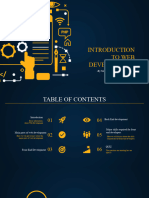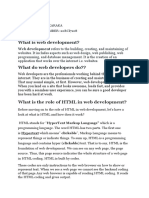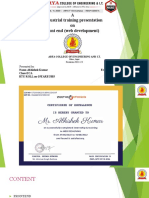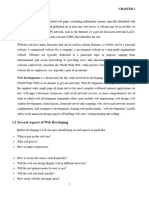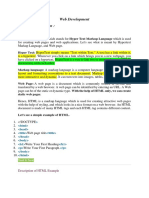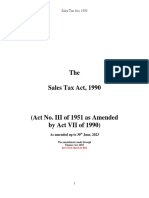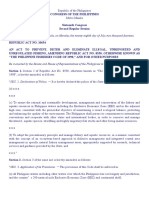0% found this document useful (0 votes)
7 views18 pagesWeb Basic Note 2
The document provides an introduction to web development, covering its definition, the distinction between frontend and backend development, and the role of HTML, CSS, and JavaScript. It explains that HTML structures web pages, CSS styles them, and JavaScript adds interactivity. Key concepts include the importance of databases and full-stack development in creating functional websites.
Uploaded by
sanyangkemo70Copyright
© © All Rights Reserved
We take content rights seriously. If you suspect this is your content, claim it here.
Available Formats
Download as PDF, TXT or read online on Scribd
0% found this document useful (0 votes)
7 views18 pagesWeb Basic Note 2
The document provides an introduction to web development, covering its definition, the distinction between frontend and backend development, and the role of HTML, CSS, and JavaScript. It explains that HTML structures web pages, CSS styles them, and JavaScript adds interactivity. Key concepts include the importance of databases and full-stack development in creating functional websites.
Uploaded by
sanyangkemo70Copyright
© © All Rights Reserved
We take content rights seriously. If you suspect this is your content, claim it here.
Available Formats
Download as PDF, TXT or read online on Scribd
/ 18

















